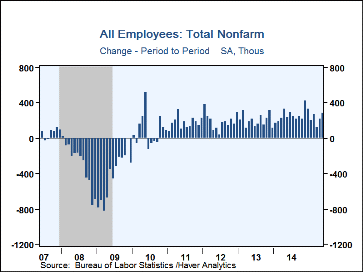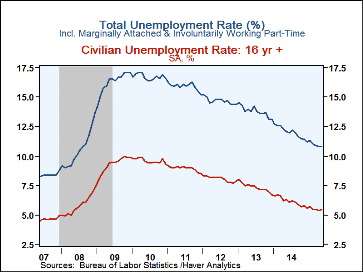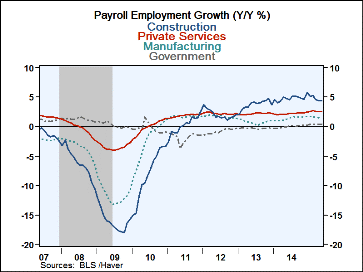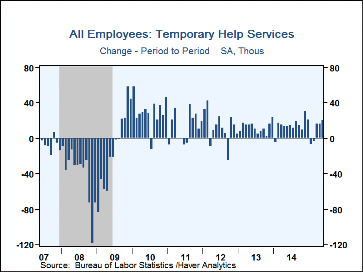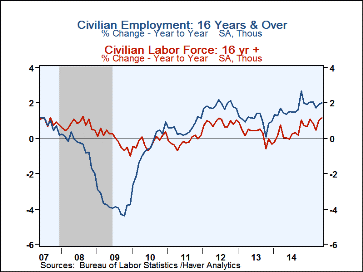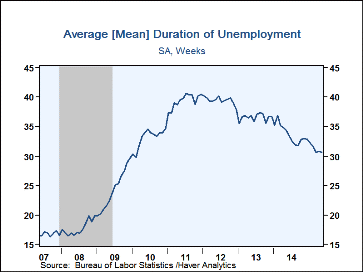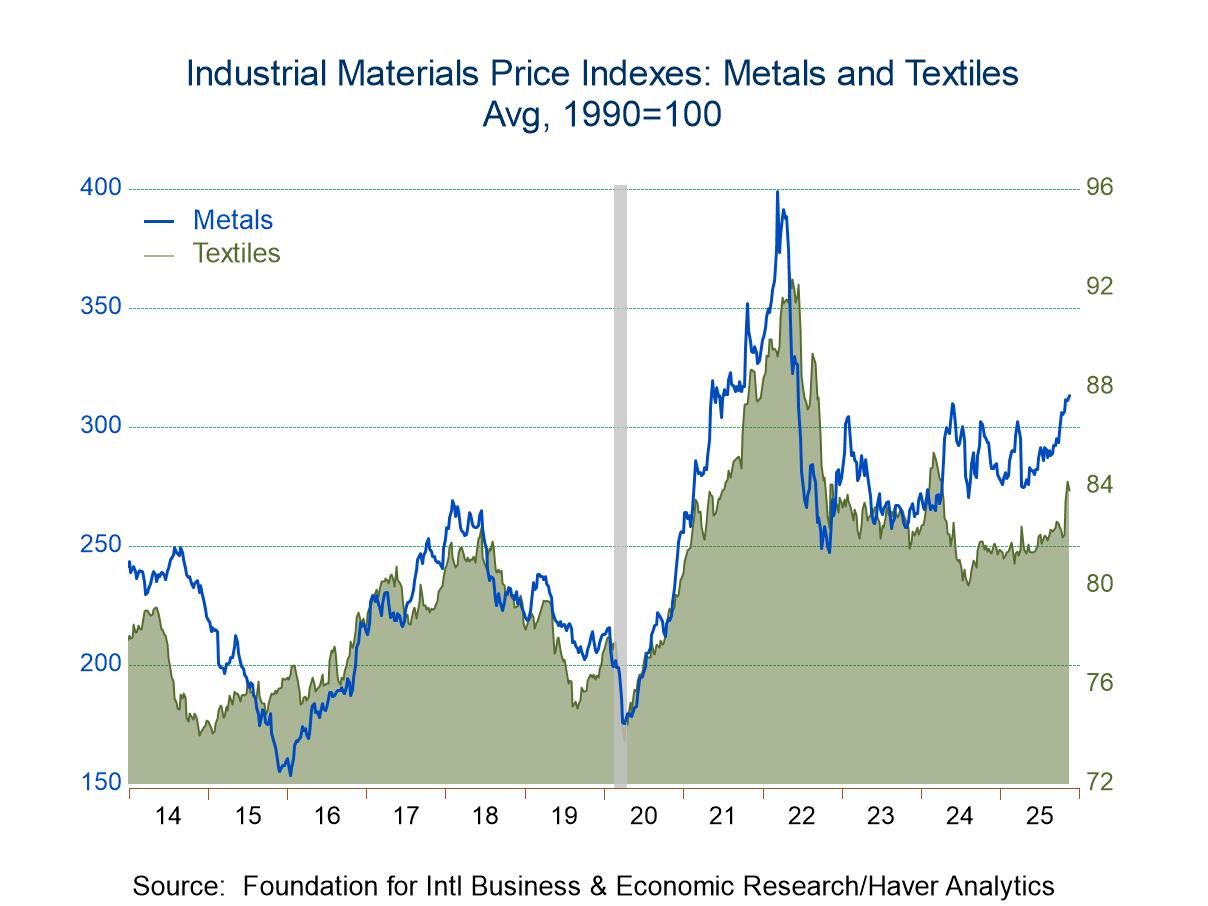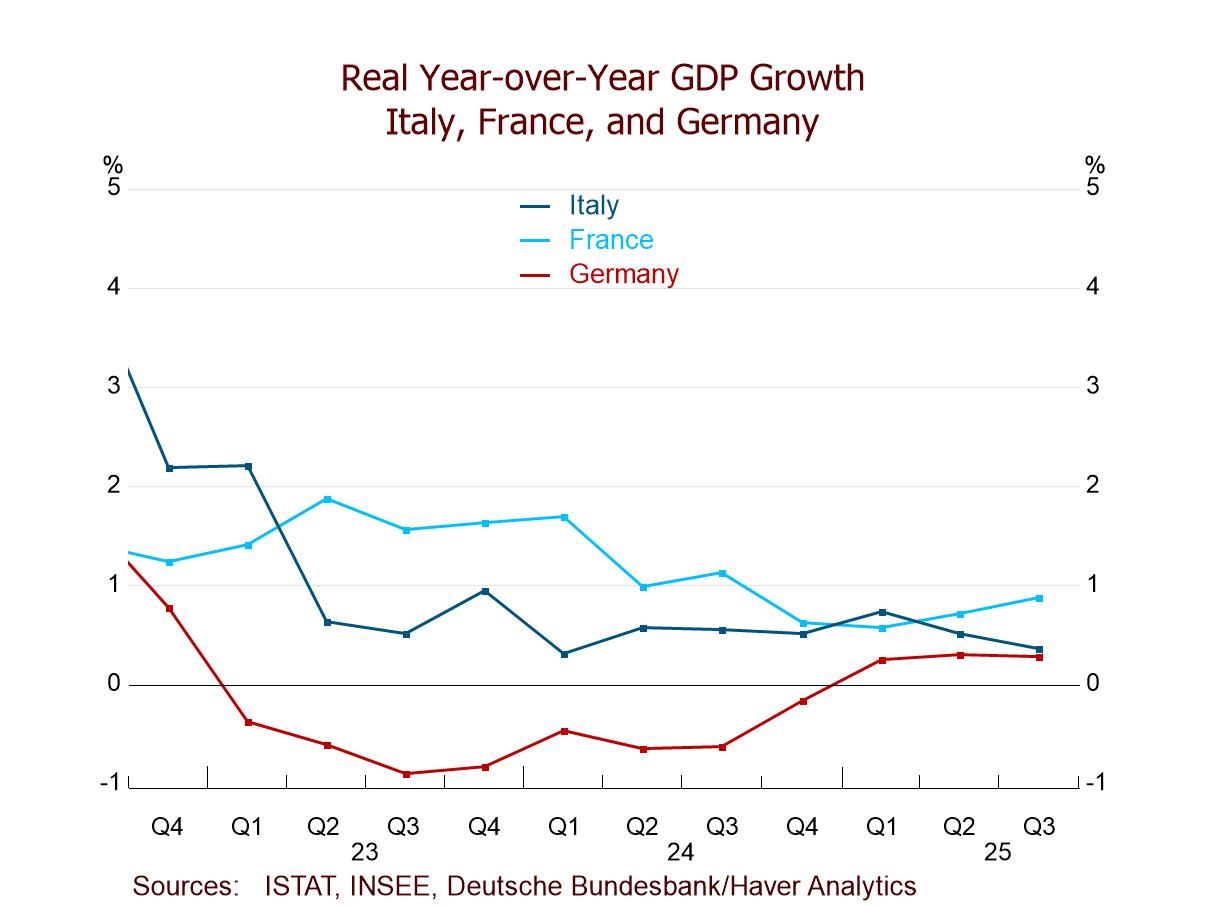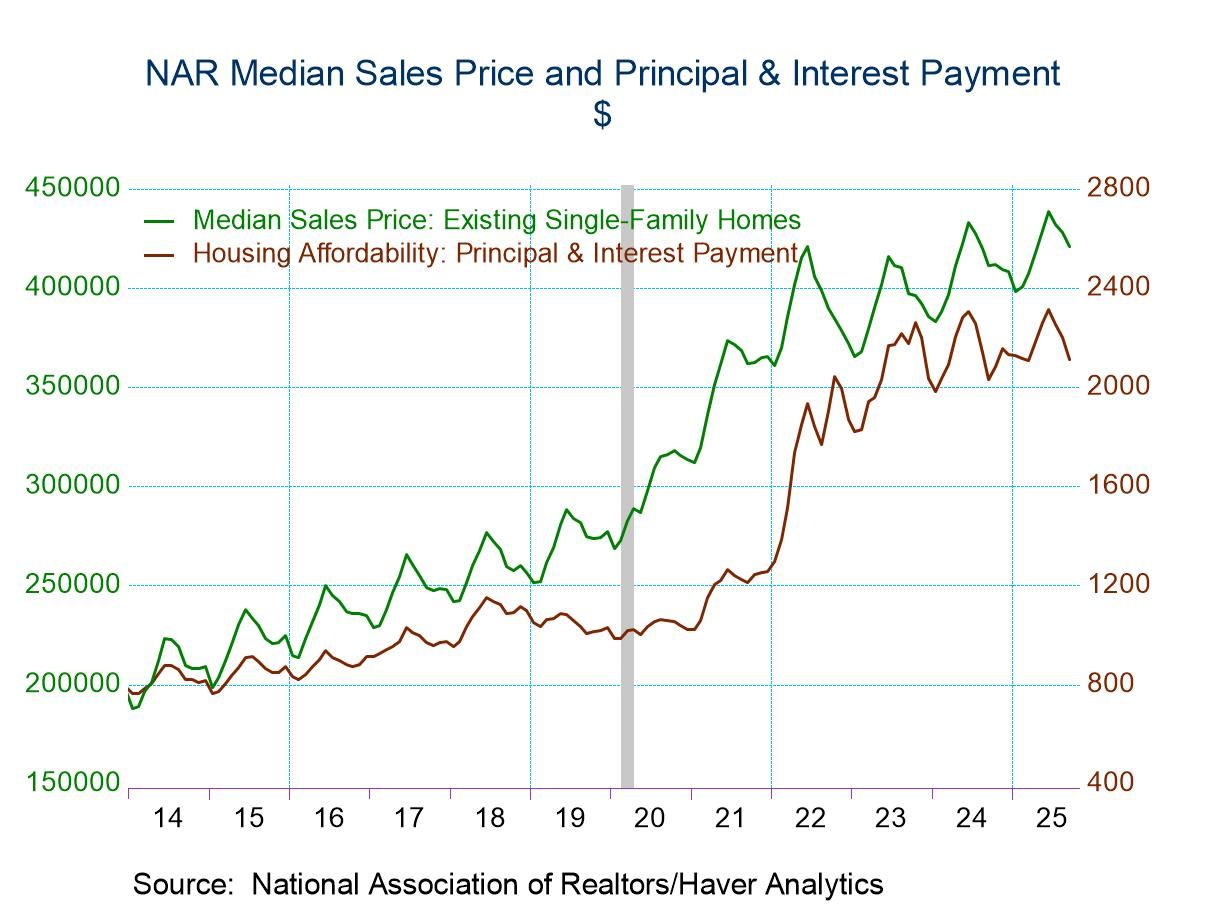 Global| Jun 05 2015
Global| Jun 05 2015U.S. Job Growth is Unexpectedly Firm; Unemployment Rate Ticks Higher
by:Tom Moeller
|in:Economy in Brief
Summary
Nonfarm payroll employment during May increased 280,000 (2.2% y/y) following a downwardly revised 221,000 April rise. The latest increase outpaced expectations for 220,000 in the Action Economics Forecast Survey. Improvement in [...]
Nonfarm payroll employment during May increased 280,000 (2.2% y/y) following a downwardly revised 221,000 April rise. The latest increase outpaced expectations for 220,000 in the Action Economics Forecast Survey. Improvement in services employment led last month's jobs increase. The unemployment rate rose to 5.5% versus expectations for stability at 5.4%. The overall unemployment rate, including marginally attached and those working part-time for economic reasons, held steady at 10.8%. Average hourly earnings improved 0.3% (2.3% y/y) compared to expectations for a 0.2% rise.
From the payroll employment survey, the 280,000 jobs increase (2.2% y/y) reflected a 7,000 worker rise in (1.4% y/y) factory sector jobs. Construction employment gained 17,000 (4.7% y/y) but mining jobs fell 17,200 (-5.9% y/y).
Private service sector employment rose 256,000 (2.7% y/y), the largest gain in six months. Education & health services jobs surged 74,000 (2.9% y/y) after a 64,000 rise. These gains are more than double the average posted in 2014. The professional & business service sector followed with a 63,000 rise (3.6% y/y) which contained a 20,100 improvement (6.4% y/y) in temporary jobs, the largest rise since December. Leisure & hospitality employment grew 57,000 (3.0% y/y) while retail employment increased 31,400 (2.2% y/y). Transportation & warehousing hiring gained 13,100 (2.8% y/y), the largest rise this year. Financial sector jobs improved 13,000 (2.0% y/y) but information sector jobs eased 3,000 (+2.3% y/y). In the public sector, employment increased 18,000 (0.5% y/y), the largest rise since August 2013. Local government employment jumped 15,000 (0.4% y/y), the most since April of last year. The federal government added 3,000 jobs (0.3% y/y) but state government employment was unchanged (0.6% y/y).
The length of the average workweek held steady at 34.5 hours, where it's been for three months. The factory sector workweek remained at 40.7 hours, but that was below the high of 41.1 hours six months ago. The private services workweek rebounded to 33.4 hours, the highest level since 2008. The transportation & warehousing workweek surged to 39.1 hours and the financial sector workweek jumped to 37.7 hours. Leisure & hospitality hours languished at 26.2. The index of aggregate hours worked (employment times hours) rose 0.3% (2.6% y/y). For the second quarter so far, aggregate hours have risen 1.0% (AR) from Q1. That compares to a 2.2% gain in Q1. During the last ten years there has been a 65% correlation between the change in the aggregate hours and real GDP.
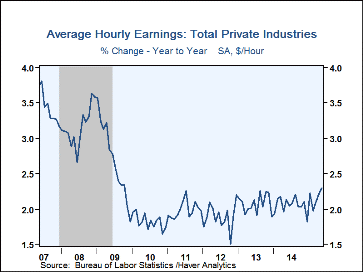 Average hourly earnings improved 0.3% (2.3% y/y), nearly the strongest rise
of the economic recovery. The rise reflected a 0.9% increase in wholesale trade
(2.4% y/y) and a 0.4% rise in education & health services (2.1% y/y).
Financial sector earnings also rose 0.4% (3.0% y/y) but professional &
business services gained just 0.2% (2.6% y/y).
Average hourly earnings improved 0.3% (2.3% y/y), nearly the strongest rise
of the economic recovery. The rise reflected a 0.9% increase in wholesale trade
(2.4% y/y) and a 0.4% rise in education & health services (2.1% y/y).
Financial sector earnings also rose 0.4% (3.0% y/y) but professional &
business services gained just 0.2% (2.6% y/y).
The household employment survey included a rise in the unemployment rate to 5.5%. Employment rose 272,000 (2.0% y/y) while the labor force gained 397,000 (1.2% y/y). The population's size grew 0.1% (1.1% y/y), so the labor force participation rate improved to 62.9%, its highest level since January. It still equaled, however, last year's average. Growth in the number of individuals not in the labor force fell to 1.1% y/y, down from a high of 2.9% during 2010.
Teenage unemployment slipped m/m to 17.1% and was down from 25.9% averaged in 2010. For white teens, it was 14.5% versus 27.5% for blacks. For those over age 20, the rate was 5.0% versus the 2010 average of 9.0%. It was 4.3% for over-20 whites, versus 8.1% in 2010. For blacks over 20, the jobless rate was 9.0% versus the 2011 high of 14.9%.
The average duration of unemployment fell to 30.7 weeks from 39.4 in 2012.
By educational attainment, the unemployment rate for those without a high school diploma held at 8.6%. For high school graduates but no college, the rate was 5.8% and for those with less than a bachelors degree it was 4.4%. For individuals with a bachelors degree or higher it was 2.7%.
The labor market data is contained Haver's USECON database. Detailed figures are in the EMPL and LABOR databases. The expectations figure is in the AS1REPNA database.
| Employment: (M/M Chg., 000s) | May | Apr | Mar | Y/Y | 2014 | 2013 | 2012 |
|---|---|---|---|---|---|---|---|
| Payroll Employment | 280 | 221 | 119 | 2.2% | 1.9% | 1.7% | 1.7% |
| Previous | -- | 223 | 85 | -- | -- | -- | -- |
| Manufacturing | 7 | 1 | 6 | 1.4 | 1.4 | 0.8 | 1.7 |
| Construction | 17 | 35 | -12 | 4.7 | 4.8 | 3.7 | 2.1 |
| Private Service Producing | 256 | 185 | 137 | 2.7 | 2.2 | 2.2 | 2.2 |
| Government | 18 | 15 | 3 | 0.5 | 0.0 | -0.3 | -0.8 |
| Average Weekly Hours - Private Sector | 34.5 | 34.5 | 34.5 | 34.5 (May'14) |
34.5 | 34.5 | 34.4 |
| Private Sector Average Hourly Earnings (%) | 0.3 | 0.1 | 0.3 | 2.3 | 2.1 | 2.1 | 1.9 |
| Unemployment Rate (%) | 5.5 | 5.4 | 5.5 | 6.3 (May'14) |
6.1 | 7.4 | 8.1 |
Tom Moeller
AuthorMore in Author Profile »Prior to joining Haver Analytics in 2000, Mr. Moeller worked as the Economist at Chancellor Capital Management from 1985 to 1999. There, he developed comprehensive economic forecasts and interpreted economic data for equity and fixed income portfolio managers. Also at Chancellor, Mr. Moeller worked as an equity analyst and was responsible for researching and rating companies in the economically sensitive automobile and housing industries for investment in Chancellor’s equity portfolio. Prior to joining Chancellor, Mr. Moeller was an Economist at Citibank from 1979 to 1984. He also analyzed pricing behavior in the metals industry for the Council on Wage and Price Stability in Washington, D.C. In 1999, Mr. Moeller received the award for most accurate forecast from the Forecasters' Club of New York. From 1990 to 1992 he was President of the New York Association for Business Economists. Mr. Moeller earned an M.B.A. in Finance from Fordham University, where he graduated in 1987. He holds a Bachelor of Arts in Economics from George Washington University.


